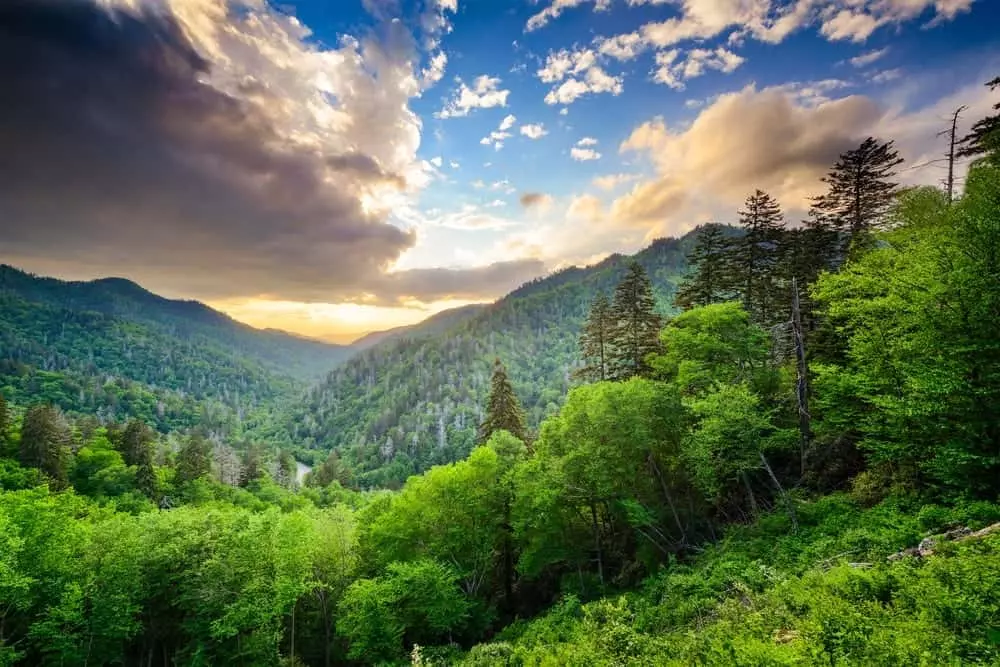Would you like to know why the Great Smoky Mountains hold a special place in the hearts of many visitors? It’s not just the stunning beauty of the misty peaks or the abundant wildlife that make this national park a must-visit destination. The rich history, diverse plant and animal species, and unique geological features all contribute to the allure of the Great Smoky Mountains. Whether you’re a nature enthusiast, history buff, or simply seeking a peaceful retreat, the Great Smoky Mountains offers something for everyone to enjoy. So come explore this beloved national park and discover for yourself why it is so special. Why is the Great Smoky Mountains special?
Have you ever wondered what makes the Great Smoky Mountains so special? From its diverse wildlife to its stunning landscapes, there is so much to explore and discover in this unique national park. In this article, we will take a closer look at what makes the Great Smoky Mountains special and why it should be at the top of your travel bucket list.
The Beauty of the Great Smoky Mountains
The Great Smoky Mountains National Park is renowned for its breathtaking beauty. With over 800 square miles of lush forests, cascading waterfalls, and majestic mountain peaks, the park offers some of the most stunning landscapes in the United States. Whether you are an avid hiker, nature lover, or photography enthusiast, the Great Smoky Mountains have something to offer everyone.
The park is home to a diverse range of plant and animal species, including black bears, elk, and wild turkeys. As you explore the park, you may also encounter rare species such as the synchronous firefly, which puts on a dazzling light show in the early summer months. The park’s diverse landscapes provide the perfect backdrop for outdoor adventures, from hiking and camping to fishing and horseback riding.
Tips for Enjoying the Beauty of the Great Smoky Mountains
When visiting the Great Smoky Mountains, it’s essential to come prepared to fully enjoy the beauty of the park. Here are a few tips to help you make the most of your visit:
- Pack plenty of water and snacks: The park’s trails can be challenging, and it’s essential to stay hydrated and energized during your hikes.
- Dress in layers: Weather in the mountains can be unpredictable, so it’s a good idea to dress in layers to stay comfortable throughout the day.
- Take a camera: With so much natural beauty to capture, you’ll want to have a camera handy to document your adventures in the park.
- Respect wildlife: While exploring the park, be sure to give wildlife plenty of space and avoid feeding or approaching animals.

This image is property of www.visitmysmokies.com.
The History of the Great Smoky Mountains
In addition to its natural beauty, the Great Smoky Mountains National Park also has a rich cultural and historical heritage. The park is home to numerous historic structures, including old homes, churches, and mills, which offer a glimpse into the region’s past. The park is also the ancestral homeland of the Cherokee people, and visitors can explore exhibits and displays that showcase the tribe’s history and culture.
The Civilian Conservation Corps (CCC) played a significant role in the development of the park in the 1930s, constructing roads, trails, and shelters that are still in use today. The park was officially established in 1934 and became a UNESCO World Heritage Site in 1983. Today, the Great Smoky Mountains National Park continues to be a place of great natural and historical significance, attracting millions of visitors each year.
Exploring the History of the Great Smoky Mountains
To learn more about the history of the Great Smoky Mountains, consider visiting one of the park’s historic sites or museums. The Mountain Farm Museum offers a glimpse into the region’s agricultural past, with log cabins, barns, and other historic buildings that have been preserved for visitors to explore. The park also offers guided tours and educational programs that focus on the region’s rich history and culture.

This image is property of i.natgeofe.com.
The Wildlife of the Great Smoky Mountains
The Great Smoky Mountains National Park is home to an incredible variety of wildlife, making it a prime destination for nature lovers and wildlife enthusiasts. The park is known for its population of black bears, which roam the forests and valleys in search of food. Visitors may also encounter other wildlife species, such as white-tailed deer, wild turkeys, and elk, as they explore the park’s trails and scenic overlooks.
The park is also a haven for birdwatchers, with over 200 species of birds that call the Great Smoky Mountains home. From colorful warblers and woodpeckers to majestic birds of prey like red-tailed hawks and bald eagles, the park offers ample opportunities for birdwatching year-round. Whether you are a seasoned birder or a casual observer, the Great Smoky Mountains is a birdwatching paradise.
Wildlife Viewing Etiquette in the Great Smoky Mountains
While encountering wildlife in the Great Smoky Mountains can be an exciting and memorable experience, it’s essential to respect the park’s wildlife and follow proper viewing etiquette. Here are a few tips to ensure you have a safe and enjoyable wildlife viewing experience:
- Keep a safe distance: For the safety of both you and the animals, it’s essential to maintain a safe distance when viewing wildlife. Use binoculars or a telephoto lens to get a closer look without disturbing the animals.
- Do not feed the wildlife: Feeding wildlife can be harmful to their health and disrupt their natural behaviors. It’s important to observe wildlife from a distance and let them forage for food on their own.
- Stay on designated trails: By staying on established trails, you can help protect wildlife habitats and minimize your impact on the environment. Avoid wandering off-trail and disturbing sensitive ecosystems.

This image is property of www.sidneyjames.com.
The Hiking Trails of the Great Smoky Mountains
One of the best ways to experience the beauty of the Great Smoky Mountains is by exploring its extensive network of hiking trails. With over 800 miles of trails that traverse diverse landscapes, the park offers hiking opportunities for all skill levels, from easy nature walks to challenging backcountry treks. Whether you prefer a leisurely stroll along a scenic stream or a strenuous climb to a mountain peak, the Great Smoky Mountains has a trail for you.
Some of the park’s most popular hiking trails include the Alum Cave Trail, which leads to the summit of Mount LeConte, the highest peak in the park, and the Laurel Falls Trail, which takes hikers to a picturesque 80-foot waterfall. For experienced hikers looking for a challenge, the Appalachian Trail runs through the park and offers a chance to hike a portion of this famous long-distance trail.
Hiking Safety Tips for the Great Smoky Mountains
Before embarking on a hike in the Great Smoky Mountains, it’s essential to be prepared and informed about the trail conditions and potential hazards. Here are a few hiking safety tips to help you stay safe and enjoy your hike:
- Check the weather forecast: Weather in the mountains can change rapidly, so it’s important to check the forecast before heading out on a hike. Be prepared for sudden thunderstorms or temperature changes.
- Pack essential supplies: Make sure to bring a map, plenty of water, snacks, a first aid kit, and any other necessary supplies for your hike. It’s also a good idea to let someone know your hiking plans and expected return time.
- Be aware of wildlife: While hiking in the Great Smoky Mountains, be on the lookout for wildlife and take precautions to avoid encounters. Carry bear spray, make noise while hiking, and store food properly to reduce the risk of bear encounters.

This image is property of www.visitmysmokies.com.
The Wildflowers of the Great Smoky Mountains
In addition to its stunning landscapes and diverse wildlife, the Great Smoky Mountains is also known for its vibrant displays of wildflowers. The park boasts over 1,500 species of flowering plants, making it one of the most biodiverse regions in the country. From delicate trilliums and showy orchids to colorful azaleas and rhododendrons, the park’s wildflower displays are a sight to behold.
The best time to see wildflowers in the Great Smoky Mountains is during the spring and early summer months when the park’s forests come alive with a riot of color. Popular wildflower viewing spots include the Roaring Fork Motor Nature Trail, the Cove Hardwood Nature Trail, and Gregory Bald, which is known for its stunning azalea displays. Whether you are an avid botanist or simply enjoy the beauty of wildflowers, the Great Smoky Mountains is a must-visit destination.
Best Practices for Enjoying Wildflowers in the Great Smoky Mountains
To ensure that wildflowers thrive in the Great Smoky Mountains for future generations to enjoy, it’s essential to follow best practices for viewing and photographing these delicate plants. Here are a few tips to help you appreciate wildflowers responsibly:
- Stay on designated trails: By sticking to established trails, you can avoid trampling delicate wildflowers and damaging their fragile habitats. Be respectful of plant life, and do not pick or disturb wildflowers.
- Leave no trace: Practice Leave No Trace principles by packing out all trash, staying on designated trails, and respecting wildlife and plant life. Minimize your impact on the environment and help preserve the park’s natural beauty.
- Learn about wildflowers: Take the time to learn about the different species of wildflowers that grow in the park and appreciate the diversity of plant life that the Great Smoky Mountains has to offer.

This image is property of littlevalleymountainresort.com.
Conclusion
In conclusion, the Great Smoky Mountains is a special place that offers a unique blend of natural beauty, history, and wildlife. Whether you are a nature lover, history buff, or outdoor enthusiast, the park has something to offer everyone. From its stunning landscapes and diverse wildlife to its rich cultural heritage, the Great Smoky Mountains is a must-visit destination for anyone looking to experience the beauty of the great outdoors. So pack your bags, grab your camera, and get ready to explore all that the Great Smoky Mountains has to offer. Happy trails!

